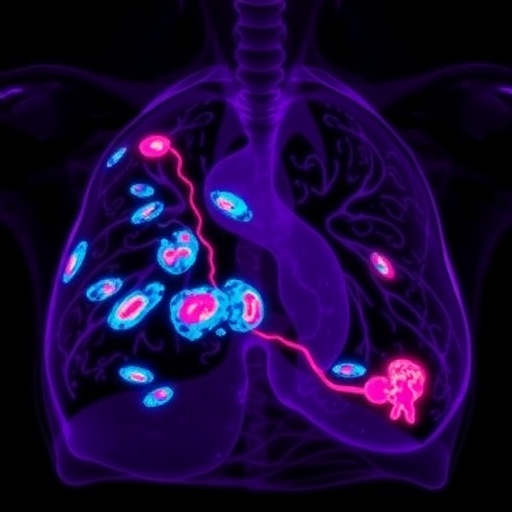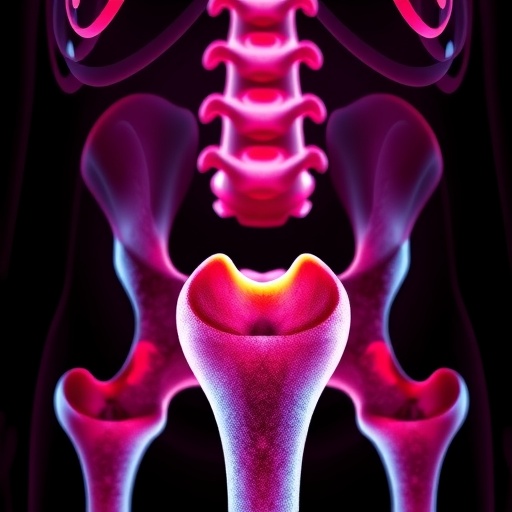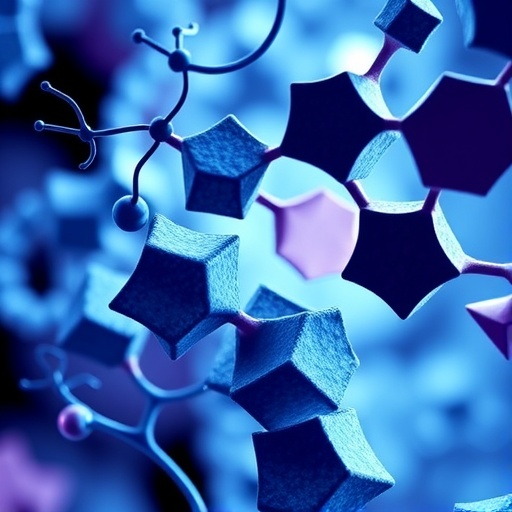
In a groundbreaking advancement poised to reshape the landscape of cancer therapeutics, researchers have unveiled compelling evidence that chrysin—a naturally occurring flavonoid—can significantly attenuate therapy-induced senescence in breast cancer cells by targeting the cGAS–STING signaling axis. This discovery, detailed in a recent publication in Medical Oncology, addresses a pressing challenge in oncology: the paradoxical role of cellular senescence induced by cancer therapies, which, while initially limiting tumor growth, may eventually contribute to tumor relapse and progression.
Cellular senescence is a state characterized by permanent cell cycle arrest, often triggered by various stressors, including chemotherapeutic agents and radiation. While senescence acts as a robust tumor-suppressive mechanism, it also promotes the senescence-associated secretory phenotype (SASP), a cocktail of pro-inflammatory cytokines, growth factors, and proteases secreted by senescent cells. These factors can remodel the tumor microenvironment, facilitating cancer cell survival, immune evasion, and metastasis. The dualistic nature of therapy-induced senescence (TIS) thus represents a critical obstacle in the effective management of breast cancer.
The cGAS–STING pathway, a pivotal innate immune signaling cascade, has recently emerged as a key molecular mediator interlinking cellular senescence and the immune microenvironment. Upon sensing cytosolic DNA fragments, often released during genotoxic stress, cyclic GMP-AMP synthase (cGAS) activates the stimulator of interferon genes (STING), culminating in the production of type I interferons and other inflammatory mediators. This pathway not only drives SASP but also modulates immune surveillance mechanisms. However, hyperactivation of cGAS–STING in tumor cells can paradoxically promote a protumorigenic milieu by fostering chronic inflammation and suppressing effective antitumor immunity.
.adsslot_OIP7FAzaGB{width:728px !important;height:90px !important;}
@media(max-width:1199px){ .adsslot_OIP7FAzaGB{width:468px !important;height:60px !important;}
}
@media(max-width:767px){ .adsslot_OIP7FAzaGB{width:320px !important;height:50px !important;}
}
ADVERTISEMENT
Billimoria and Bhatt’s investigation delves into this complex biological interplay, revealing that chrysin impedes the cGAS–STING pathway, thereby mitigating the deleterious consequences of therapy-induced senescence in breast cancer cell models. Their meticulous in vitro and in vivo analyses demonstrate that chrysin treatment curtails the expression of key senescence markers, reduces SASP factor secretion, and dampens downstream inflammatory signaling. Intriguingly, these effects translated into enhanced sensitivity of breast cancer cells to chemotherapeutic agents, suggesting a potential synergistic avenue for combination therapies.
This discovery holds multifaceted implications for breast cancer management. Breast cancer remains one of the most prevalent and heterogeneous malignancies worldwide, with therapy resistance and tumor recurrence posing formidable clinical challenges. The advent of treatments that can selectively modulate senescence and attenuate the pro-inflammatory SASP environment without compromising therapeutic efficacy could revolutionize outcome prognostication and intervention strategies.
Mechanistically, the authors elucidate that chrysin exerts its inhibitory effects by disrupting the enzymatic activity of cGAS, which leads to a downstream attenuation of STING activation. This disruption curtails the phosphorylation cascade responsible for the induction of type I interferons and pro-inflammatory cytokines that comprise the SASP. This fine-tuned modulation of innate immune signaling distinguishes chrysin from broad-spectrum anti-inflammatory agents, offering a targeted approach that preserves necessary immune functions while limiting protumorigenic inflammation.
Perhaps most compelling is the translational potential of chrysin, a bioflavonoid commonly found in passion flowers, honey, and propolis. Its endogenous origin and favorable safety profile in preclinical models render it an enticing candidate for therapeutic development. Moreover, the natural compound’s capacity to synergize with standard chemotherapeutics, reducing senescence-associated therapeutic resistance, could pave the way toward integrating nutraceuticals with established oncology regimens.
The research further explored the molecular dynamics of chrysin interaction within breast cancer cells undergoing TIS, employing state-of-the-art molecular assays and imaging techniques. These methodologies substantiated the suppression of DNA damage response signaling, reduced accumulation of cytoplasmic DNA, and diminished recruitment of immune modulators, corroborating the compound’s direct influence on cGAS–STING-mediated pathways. These findings underscore a previously underappreciated nexus between natural compounds and innate immune regulation in cancer biology.
The implications extend beyond breast cancer, as therapy-induced senescence and cGAS–STING activation are increasingly recognized as contributors to other malignancies’ progression and resistance profiles. By targeting the molecular signatures dictating SASP and immune modulation, chrysin or analogs thereof may serve as prototype agents in a broader oncologic context.
Importantly, the authors address potential concerns regarding the indiscriminate suppression of immune pathways that might hamper beneficial antitumor responses. They propose that chrysin’s mechanism does not abolish the cGAS–STING pathway entirely but tempers its overactivation, reducing chronic inflammation while preserving acute immune surveillance. This nuanced approach could circumvent immune-related adverse events frequently encountered with immunomodulatory therapies.
The study also opens compelling avenues for personalized medicine approaches. Given the heterogeneity in cGAS–STING pathway activation among breast cancer subtypes and individual patient variations, chrysin’s modulatory effects might be particularly beneficial in selected phenotypes characterized by heightened therapy-induced senescence and inflammation. Future biomarkers identifying such patients could optimize therapeutic efficacy and minimize unnecessary exposure.
Looking forward, clinical trials investigating chrysin’s efficacy in combination with chemotherapeutics and immunotherapies appear warranted. Evaluating pharmacokinetics, optimal dosing regimens, and potential synergisms in human subjects will be critical. Additionally, exploring derivatives or formulations that enhance chrysin’s bioavailability and tumor-specific targeting could amplify therapeutic gains.
In a broader scientific context, this work exemplifies the untapped potential of natural compounds in modulating intricate cellular signaling networks within cancer microenvironments. It reinforces the paradigm that integrating natural product chemistry with molecular oncology can yield transformative insights and practical interventions targeting cancer hallmarks like senescence and inflammation.
To summarize, this pioneering investigation into chrysin’s capacity to mitigate therapy-induced senescence via cGAS–STING inhibition heralds a promising frontier in breast cancer therapy. It navigates the complex crosstalk between cellular senescence, innate immunity, and therapeutic resistance, offering a strategy to enhance treatment outcomes while minimizing adverse pro-tumorigenic sequelae. The integration of such targeted, biologically grounded approaches represents an auspicious leap toward more effective, durable, and personalized cancer care.
Subject of Research: The study focuses on the effects of chrysin on therapy-induced senescence in breast cancer cells, specifically investigating its role in inhibiting the cGAS–STING innate immune pathway.
Article Title: Chrysin mitigates therapy-induced senescence in breast cancer via cGAS–STING pathway inhibition.
Article References:
Billimoria, R., Bhatt, P. Chrysin mitigates therapy-induced senescence in breast cancer via cGAS–STING pathway inhibition. Med Oncol 42, 445 (2025). https://doi.org/10.1007/s12032-025-02993-x
Image Credits: AI Generated
Tags: breast cancer relapse mechanismscGAS-STING signaling axischemotherapeutic agents and senescenceChrysin in breast cancer therapycytokines and cancer progressiondual role of cellular senescenceflavonoids in cancer treatmentimmune evasion in cancerinnovative cancer therapeuticssenescence-associated secretory phenotypetherapy-induced senescence in oncologytumor microenvironment remodeling





